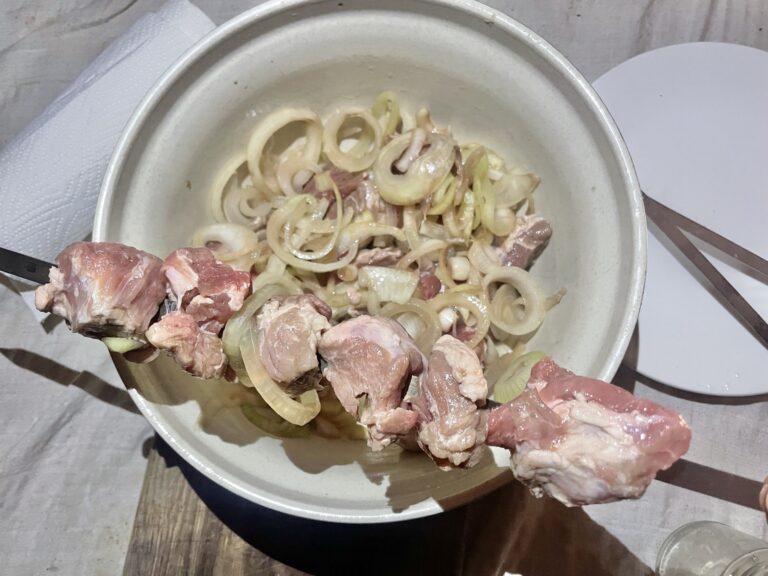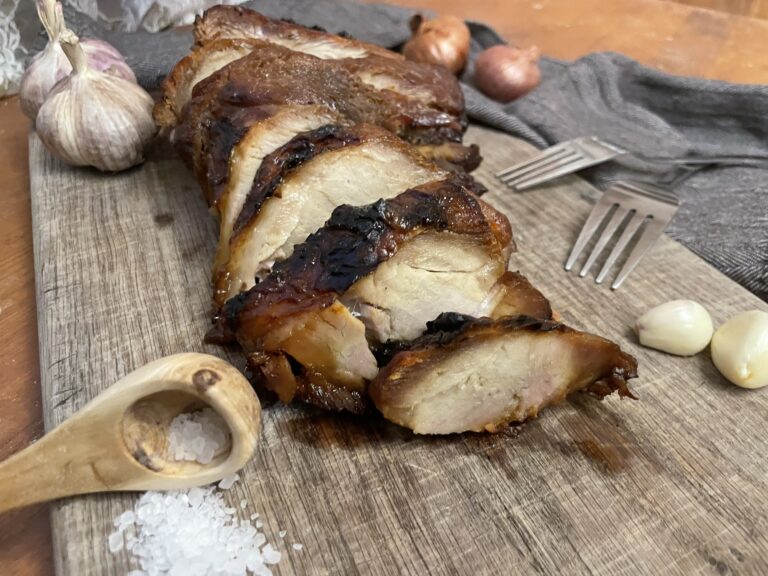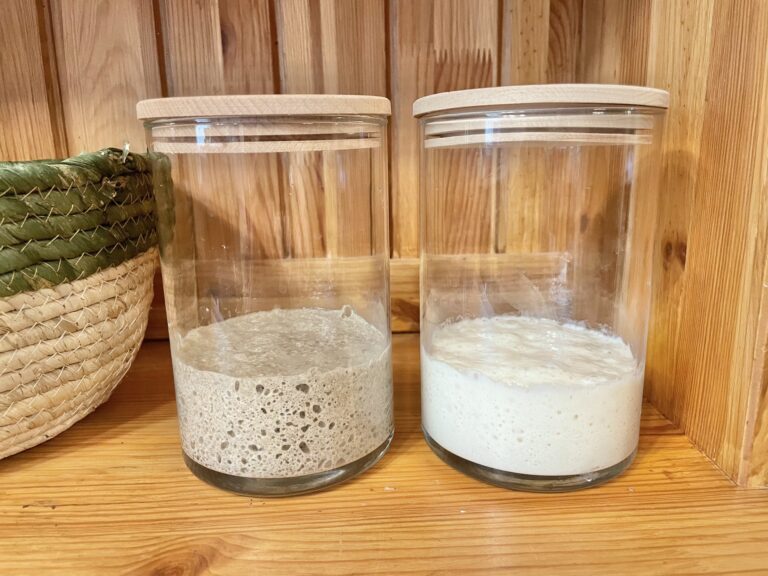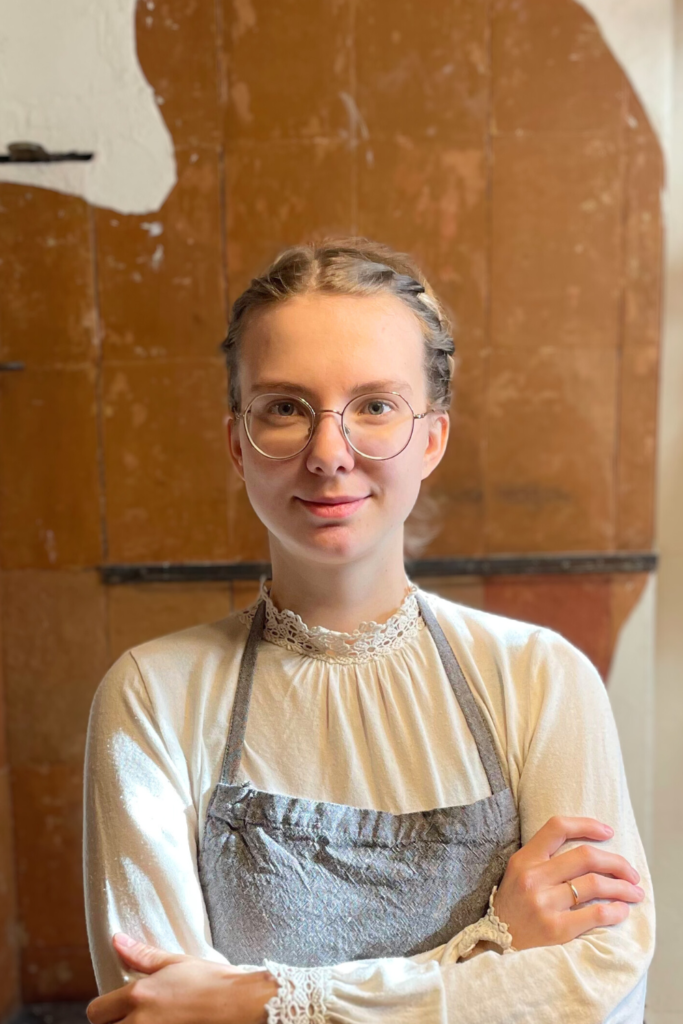Placing a roasted chicken on the dinner table creates a truly festive and elegant look. However, this recipe is also perfect for a quick weekday dinner because, while the meat is baking in the oven, you can attend to other household chores. The cooking process of roast chicken is straightforward. In my opinion, baking food in the oven is one of the easiest ways to prepare a meal – you just set the right temperature and wait for the food to be ready – incredibly convenient!

The best thing about roasting a whole chicken is that you can use leftover chicken for various purposes. Chicken bones and meat can be used for homemade chicken stock or chicken broth, which are excellent for soups and purees. You can also prepare chicken pasta or make a delicious chicken gravy the next day. This is why it’s one of my favorite recipes – it’s great to be able to make multiple dishes at once.
Before you start reading, come and follow me on Instagram, Facebook, and Pinterest!
Where to Roast Chicken?
You can use a special roasting pan for roasting chicken, where the chicken itself is on a baking rack, and all the pan drippings collect in the baking pan. However, you don’t necessarily need such a specific system, you can use a dutch oven or another baking tray. The container in which the chicken is roasted must have high edges because a lot of pan juices come out of the chicken, and in the worst case, it can drip onto the stove. I am used to roasting chicken in a dutch oven, but I do not recommend putting a lid on it. I tried once to roast it with the lid on. Firstly, the chicken does not get crispy skin, and secondly, the taste is like boiled chicken – you might as well boil it in water. However, roasting chicken in a dutch oven has the advantage that you can add various vegetables to it – thanks to the high edges of the dutch oven, you can fit quite a lot.
How to Roast the Perfect Chicken
It’s the perfect roast chicken recipe, since the outside of the chicken has golden-brown crispy skin, while the inside is soft, juicy, and tender meat. But making such chicken is not easy because when the pan drippings flow out, the chicken becomes dry.
The chicken meat itself is quite juicy, and this plays in our favor. Unfortunately, there is less juice in the breast meat, and chicken breasts should be roasted for a shorter time than chicken legs. Therefore, when roasting a whole chicken in one piece, the breast meat tends to become dry, and the thigh meat, on the other hand, can remain undercooked. To overcome this, we use butter and lemon, which help keep the chicken juicy even when we extend the cooking time for the legs.
Use of Butter
To achieve particularly crispy skin on the chicken, butter must be inserted under the skin on top of the chicken breast. The butter starts to brown underneath, adding good flavor and crispiness. However, it’s essential because the butter helps keep the chicken breast juicy and prevents it from drying out too quickly.
Carefully slide your finger under the skin on the chicken breast and create a pocket. While the skin comes off quite easily from the meat, be cautious not to tear it. If you tear the skin, even the last drop of moisture will flow out during cooking. Once you’ve gently pulled the skin away from the meat, fill the pocket under the breast with butter slices.
Use of Lemon
As mentioned earlier, lemon is crucial for cooking juicy meat. You can actually use any citrus instead of lemon, but lemon has the most neutral taste, so I usually use it for this purpose.
Cut the lemon in half. If you have a huge lemon, you can even cut it into quarters and place it inside the chicken cavity. Depending on the size of the lemon, use one or two lemons.
Make Incisions in the Legs
Another way to even out the cooking time for chicken legs and the breast is to make incisions in the legs. Cut a few deep slits into both legs of the chicken. Thanks to this, the heat penetrates better, and the meat around the bones cooks faster.
Instant Read Thermometer
I have never used a meat thermometer when roasting chicken to measure the internal temperature of the roast. I find it not super necessary, and you don’t have to go to the store specifically to look for a meat thermometer. However, if you want to make sure of the degree of doneness using a thermometer, the internal temperature of the whole chicken should be at least 180°F (82°C), and it’s the best way to measure it from the inside of the thickest part of the breast, as deep as possible.

How to Season Chicken?
You can season chicken however you like! You can use fresh herbs as well as dried grounded seasonings. The seasoning mix is easiest to make with olive oil, but I have used pork fat once when I didn’t have oil at home.
While you would only need to add something citrusy for moisture into the cavity of the chicken, in addition to that, you can fill the chicken with other flavors, such as garlic cloves, onion, paprika, or anything else you like.
What You’ll Need for Roasting Chicken
Whole chicken
Seasonings of your choice – (e.g., black pepper, curry, chili powder, paprika powder, or fresh herbs like fresh thyme or basil)
Salt – for seasoning chicken, I mostly use fine salt, but you can also use kosher salt.
Olive oil – (extra virgin)
Butter
See the recipe card below the post to view ingredient quantities and nutritional information.
Instructions for Roasting Chicken
- Place all the seasonings you want to season the chicken in a small bowl. Add more seasonings rather than less. However, do not add salt yet.
- Add olive oil to the bowl and mix the seasonings into a thick consistency seasoning mixture.
- Spread the seasoning mixture all over the chicken. If it seems like there are too few seasonings on the chicken, feel free to add more. It’s difficult to over-season the chicken.
- Now you can add salt. Sprinkle fine salt evenly over the chicken so that the entire chicken is covered. Roast meat always needs surprisingly much salt.
- Once you have seasoned the chicken all over, place it in a baking tray, breast-side up. For good measure, you might want to grease the bottom of the pan with butter or oil to prevent the chicken from sticking to the pan.
- Make 1-3 deep incisions in both legs.
- You can tie the chicken legs together, it looks neater. For this, you can use natural kitchen twine.
- Now, you need to insert butter into the chicken breast. If your butter is refrigerator-cold, cut thin slices, about 0.2 in (0.5 cm) thick, and place them carefully under the chicken skin. If you have softer butter, you can simply stuff it under the skin however it works for you.
- As a last step, the cavity of the chicken needs to be filled. Put something citrusy in there, like a lemon, and optionally, you can add other flavors like garlic, onion, paprika, or anything else you like.
- Place the chicken in the oven to roast, without covering it. The cooking time for chicken should be at least one hour, and additional time may be needed, it depends on the size of your chicken. The oven temperature is set to 400°F (200°C).
- A properly roasted chicken is golden brown on top, chicken juices have flowed into the bottom of the baking dish, and the meat around the bones has turned light.

Ideas and Tips
- I always add salt to the chicken separately from other seasonings because this ensures that it is evenly distributed over the entire chicken.
- Roasted chicken can be stored in the refrigerator in an airtight container for several days.
- Here’s a great guide if you want to know how to easily carve the chicken after roasting. My husband, Teodor, usually does this for us. I haven’t learned this skill properly yet, and since he always does it, I don’t need to. It’s a nice division of tasks!
- Check out the recipe here for making a delicious schnitzel.
Enjoy your perfectly roasted chicken! Serve it with your favorite side dishes, and savor the delicious flavors and crispy skin. This versatile dish is not only perfect for special occasions but also convenient for weeknight dinners. The leftovers can be creatively repurposed into various other meals, ensuring a delightful culinary experience for your family.


A Perfect Whole Roast Chicken (Juicy and Crispy)
It's the perfect roast chicken recipe, since the chicken has golden-brown crispy skin, while the inside is soft, juicy, and tender meat.
Ingredients
- A whole chicken
- Seasonings of your choice (e.g., black pepper, curry, chili powder, paprika powder, or fresh herbs like fresh thyme or basil)
- Salt - for seasoning chicken, I mostly use fine salt, but you can also use kosher salt.
- Extra Virgin olive oil
- Butter
Instructions
- Place all the seasonings you want to season the chicken in a small bowl. Add more seasonings rather than less. However, do not add salt yet.
- Add olive oil to the bowl and mix the seasonings into a thick consistency seasoning mixture.
- Spread the seasoning mixture all over the chicken. If it seems like there are too few seasonings on the chicken, feel free to add more. It's difficult to over-season the chicken.
- Now you can add salt. Sprinkle fine salt evenly over the chicken so that the entire chicken is covered. Roast meat always needs surprisingly much salt.
- Once you have seasoned the chicken all over, place it in a baking tray, breast-side up. For good measure, you might want to grease the bottom of the pan with butter or oil to prevent the chicken from sticking to the pan.
- Make 1-3 deep incisions in both legs.
- You can tie the chicken legs together, it looks neater. For this, you can use natural kitchen twine.
- Now, you need to insert butter into the chicken breast. If your butter is refrigerator-cold, cut thin slices, about 0.2 in (0.5 cm) thick, and place them carefully under the chicken skin. If you have softer butter, you can simply stuff it under the skin however it works for you.
- As a last step, the cavity of the chicken needs to be filled. Put something citrusy in there, like a lemon, and optionally, you can add other flavors like garlic, onion, paprika, or anything else you like.
- Place the chicken in the oven to roast, without covering it. The cooking time for chicken should be at least one hour, and additional time may be needed, it depends on the size of your chicken. The oven temperature is set to 400°F (200°C).
- A properly roasted chicken is golden brown on top, chicken juices have flowed into the bottom of the baking dish, and the meat around the bones has turned light.
Nutrition Information:
Yield: 4 Serving Size: 1Amount Per Serving: Calories: 460Total Fat: 29gSaturated Fat: 9gTrans Fat: 0gUnsaturated Fat: 18gCholesterol: 159mgSodium: 625mgCarbohydrates: 0gFiber: 0gSugar: 0gProtein: 46g





